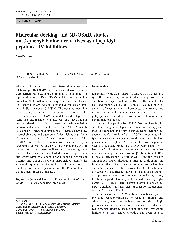摘要
Three-dimensional quantitative structure-activity relationship (3D-QSAR) and molecular docking studies were carried out to explore the binding of 73 inhibitors to dipeptidyl peptidase IV (DPP-IV), and to construct highly predictive 3D-QSAR models using comparative molecular field analysis (CoMFA) and comparative molecular similarity indices analysis (CoMSIA). The negative logarithm of IC(50) (pIC(50)) was used as the biological activity in the 3D-QSAR study. The CoMFA model was developed by steric and electrostatic field methods, and leave-one-out cross-validated partial least squares analysis yielded a cross-validated value (r(cv)(2)) of 0.759. Three CoMSIA models developed by different combinations of steric, electrostatic, hydrophobic and hydrogen-bond fields yielded significant r(cv)(2) values of 0.750, 0.708 and 0.694, respectively. The CoMFA and CoMSIA models were validated by a structurally diversified test set of 18 compounds. All of the test compounds were predicted accurately using these models. The mean and standard deviation of prediction errors were within 0.33 and 0.26 for all models. Analysis of CoMFA and CoMSIA contour maps helped identify the structural requirements of inhibitors, with implications for the design of the next generation of DPP-IV inhibitors for the treatment of type 2 diabetes.
- 出版日期2010-7
- 单位重庆工商大学
